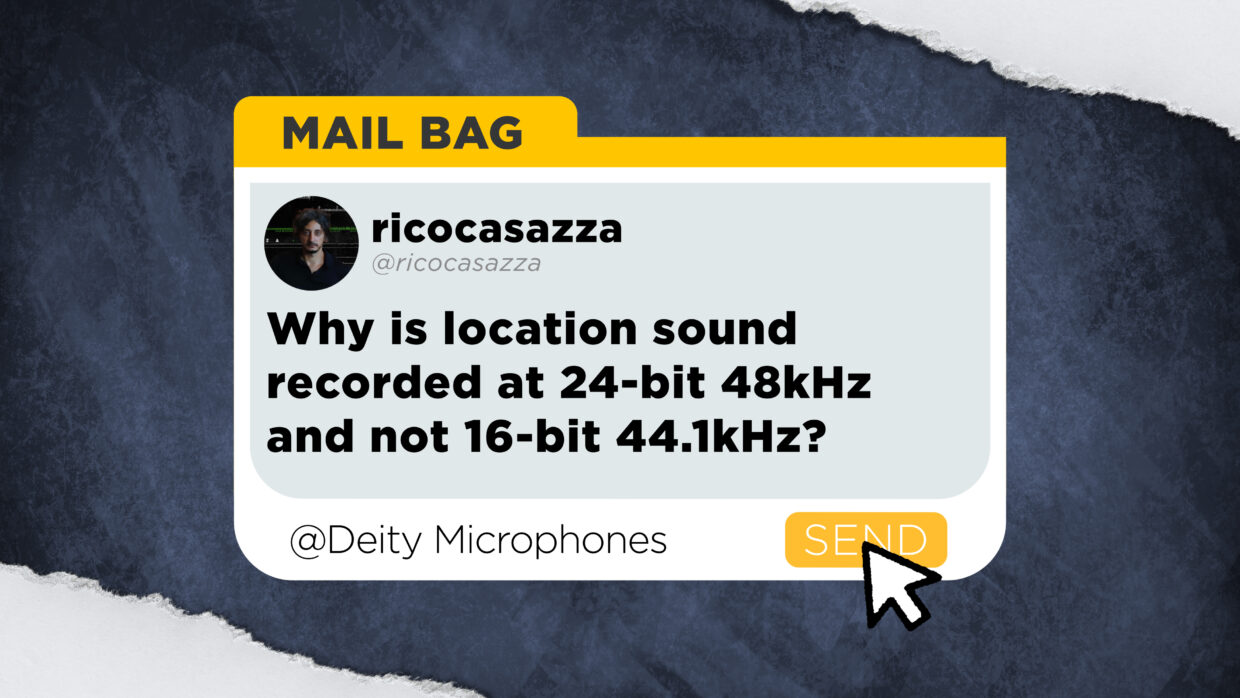Your film questions. Our professional answers.

Question #1
Candin Muniz asks,
“How do you know it’s time to upgrade your mic to something higher-end?”
Do you like it?
Do you like the quality of the gear you currently own? Do your clients ask you to use something different? If either is a no, continue using what you like until it is paid off and makes you profit.
Upgrading your gear is only necessary when you start to feel held back by it.


Question #2
NH asks,
“24fps or 30fps?”
What’s your deliverable?
24 and 30 both have their uses for different projects.
24 is the cinema standard, its motion blur is most similar to what we see in real life and appears pleasing.
30 has less motion blur, making it ideal for videos where detailed movement is key, such as instructional or workout videos.


Question #3
ricoasazza asks,
“Why is location sound recorded at 24-bit 48kHz and not 16-bit 44.1 kHz?”
Better resolution = better flexibility
Your recording data rate should always be better than your deliverable data rate. You want the maximum amount of data to work with while editing and then you compress the data during the deliverable step.
Starting with compressed data will limit what can be fixed or what style adjustments you can make.
The reason 44.1kHz exists at all is explored in depth by Technology Connections.


Question #4
ProCopy asks,
“Need a quick way to color match footage from different cameras.”
We have the tech
Log footage and LUT profiles go hand in hand to solve this problem.
Even if your cameras are from different brands, shoot in their log profile and then use a rec.709 conversion LUT to match them.
As long as you expose the footage properly and there are no external factors like extreme weather, your footage will be color-matched.


Question #5
Gabe Sheffield asks,
“I want to record a choir performance. Need separate recordings of ambient singing and the isolated vocals.”
Proper mic stands and headsets
The first thing to consider is that this is a performance and the audio setup shouldn’t obstruct the audience’s view.
There are mic stands specifically made for called “Choir Stands.” Since we want to capture the texture of the location (reverb) use a short shotgun mic to capture the environment with the vocals.
To capture the isolated lead vocals,you will need something with a much closer focus like a headset microphone.

